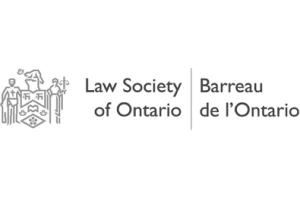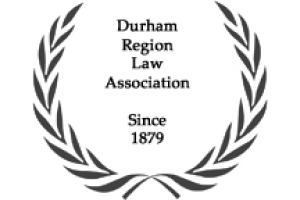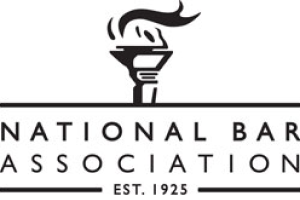Wagner Electric Corporation
Wagner is another company that was involved in the electrification and industrialization of manufacturing near the end of the 19th century. Named after one of the founding partners, Herbert Wagner, the company started making electrical motors and starters for automobiles in 1891.
The first production facility was a small shop in the center of St. Louis, Missouri which they quickly outgrew. Wagner, together with his partner, Francis Schwedtman, purchased land in 1906 outside of the city in Wellston where they started building at 6400 Plymouth Avenue. The factory complex eventually covered an entire city block and employed over 6000 people. Wellston was a railway suburb of St. Louis meaning that it was easily accessible by rail and streetcars from the city. Wellston is now considered to be inner city as the population of St. Louis has continued to move to the suburbs and away from formerly industrialized areas.
To avoid the activities of the burgeoning trade unions Wagner hired predominantly from rural areas. They favoured employing young women, not only for their manual dexterity, but as a means of saving the company money as they could get away with paying them lower wages. Equal pay for equal work was only a dream for women in those days.
Adding to their transformer and brake production lines, Wagner developed automobile headlamps and produced their first marketable headlight in 1909.
Wagner incorporated as a Missouri corporation in 1922 as the Wagner Electric Company. Historical records show Wagner products first made their way into the Canadian marketplace in 1927, although they did not register the Wagner name with the Canadian Trademark and Patent office until 1954.
The corporation was purchased by the Studebaker Corporation in May of 1967 and part of the company was reincorporated as a Delaware Corporation. The original Missouri Corporation continued to own and operate the Missouri end of the Wagner operation. To attempt to avoid confusion later in this article we will refer to the Corporations as Wagner (1922) and Wagner (1967).
At the time that Studebaker purchased Wagner, the company had three distinct corporate divisions; one making automotive parts including mechanical friction products, a second to manufacture electrical motors and a third building transformers.
The Corporation was sold by Studebaker to McGraw Edison Co. in October of 1979, where it was eventually morphed into becoming the Wagner Division of McGraw, and referred to as the Controls Division of McGraw.
The first asbestos liability claim was brought against Wagner in 1979. At that time Wagner was a supplier of asbestos containing brake products to over 75 original equipment assemblers including Mack Trucks, International Harvester, Volvo, General Motors, Ford, Dodge, Clark Equipment, and Chrysler Canada.
Under McGraw ownership the original Wagner factory facility in St. Louis was abandoned in 1981. The company announced that they no longer needed the production facility as they had enough capacity in other cities. Wagner convinced the County of St. Louis to purchase the property for a token $1. After the property was transferred it was discovered that the site was contaminated with PCB-laden oil, asbestos and cyanide. The Environmental Protection Agency got involved and the fight over who was going to fund the clean up began.
In May of 1985, in the midst of the legal wrangling over the St. Louis contaminated factory site, McGraw was purchased by Cooper Industries. As part of this transaction Wagner Electric became part of Cooper Controls Inc. In 1987 Cooper agreed to fund some of the clean-up costs in St. Louis but the site remained a deteriorating eyesore for over 20 years as Cooper’s contribution was insufficient to address full remediation requirements. The city of St. Louis due to the exodus of industry, and therefore their tax base, did not have the financial ability to step in and resolve the land problem.
Wagner asbestos containing brake products were sold under the product lines of Wagner, Lockheed and Comax (or a combination of those names). As well as providing brakes to various original equipment assemblers, Wagner’s aftermarket products contained asbestos from 1940 until 1985.
Cooper sold Wagner (1967) to Magne Tek Inc. in 1986. This included Wagner Brakes. In this transaction Magne Tek agreed to be liable for all asbestos litigation involving non-automotive brake products. Cooper continued to own Wagner (1922) and used the company to defend claims relating to automotive brake products.
Cooper convinced Federal-Mogul, a rival brake manufacturer, also heavily laden with asbestos liability, to purchase Wagner (1922) in 1997.
Federal-Mogul subsequently announced that they had insufficient assets to defend the number of claims brought against them and sought the protection of the bankruptcy court in 2001. There has been much speculation about Federal Mogul’s string of corporate acquisitions leading up to their voluntary filing as a legal but seemingly immoral way to avoid paying mesothelioma victims full value for their losses.
From the time of the Chapter 11 bankruptcy filing in October of 2001, Federal Mogul and Cooper have been battling over how to resolve Wagner automobile brake product liability claims. Federal Mogul demanded that Cooper live up to their agreement to address the problem. Finally, they were able to come to an agreement that the Court approved in 2007 and Federal Mogul emerged from Bankruptcy having shed its asbestos liability. It took until September 17, 2018, for the details to be finalized, and the compensation fund to open.
The Federal Mogul asbestos trust has a sub fund specifically dedicated to claims arising from exposure to Wagner products. It is estimated that upwards of 100,000 claims will be filed from those injured by asbestos containing products manufactured by Wagner during the initial claims filing period. If you are suffering from mesothelioma or your loved one has died from anasbestos related disease between October 2001 and September 2018, you have two years to file a claim with the FMP trust. Contact us to learn how.








